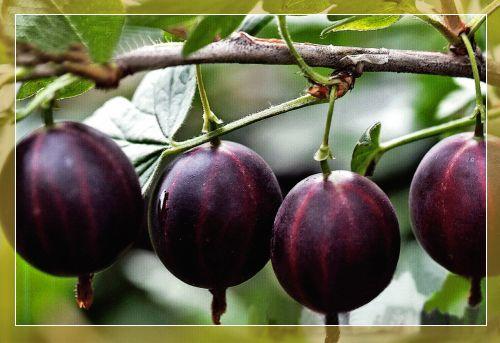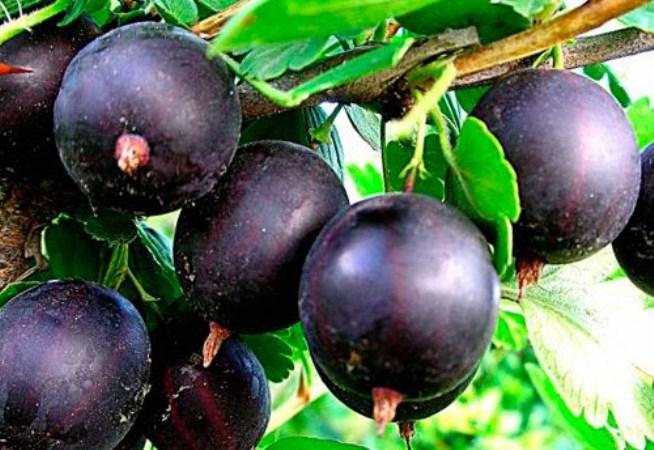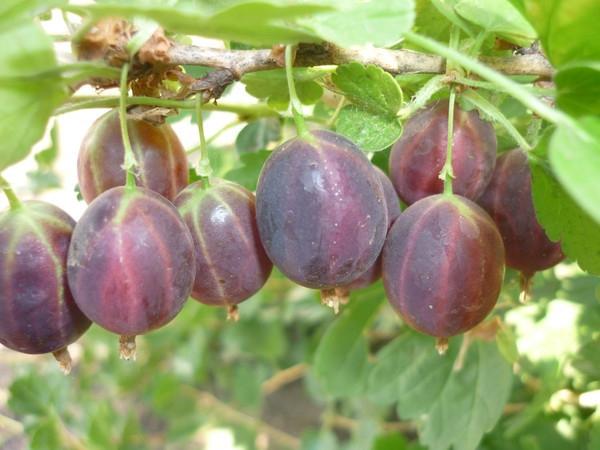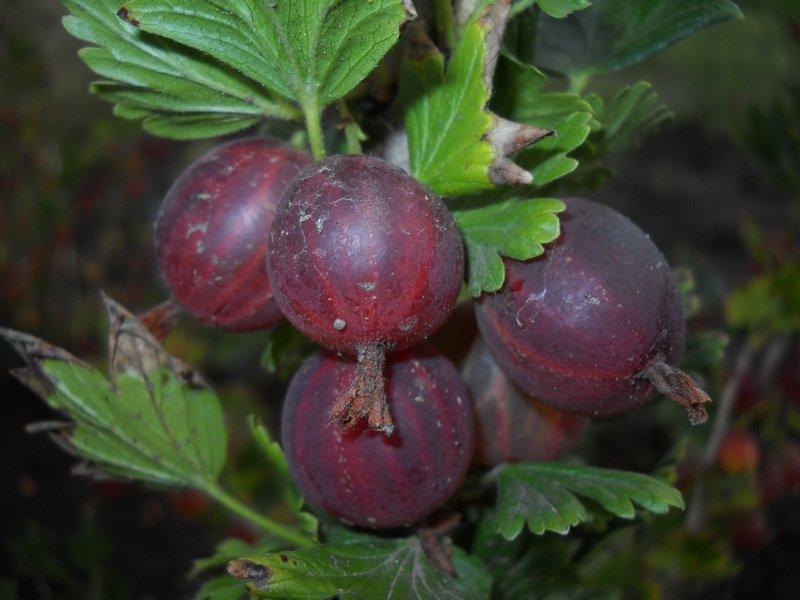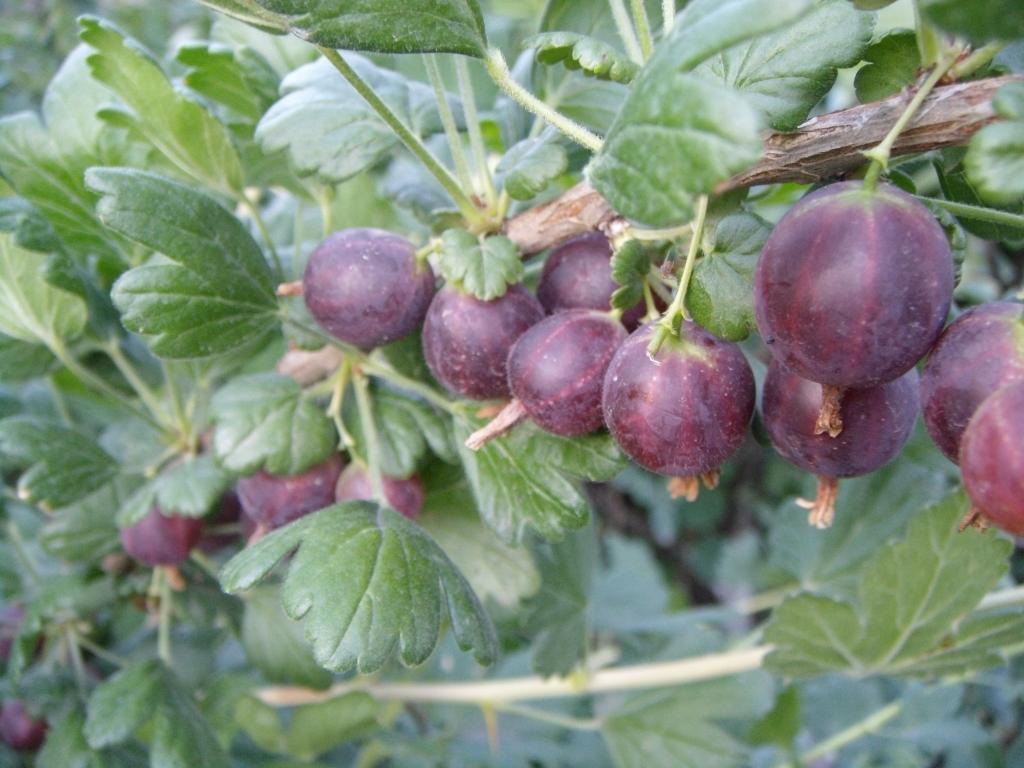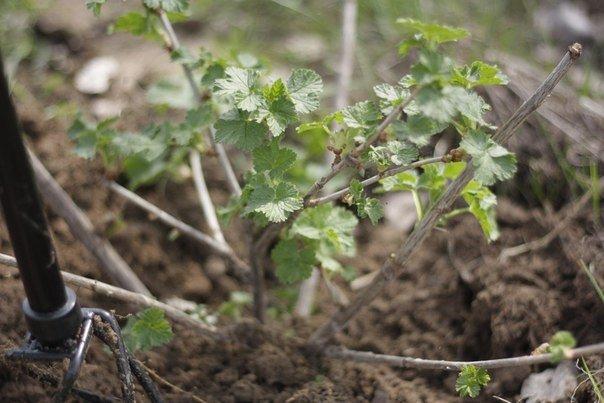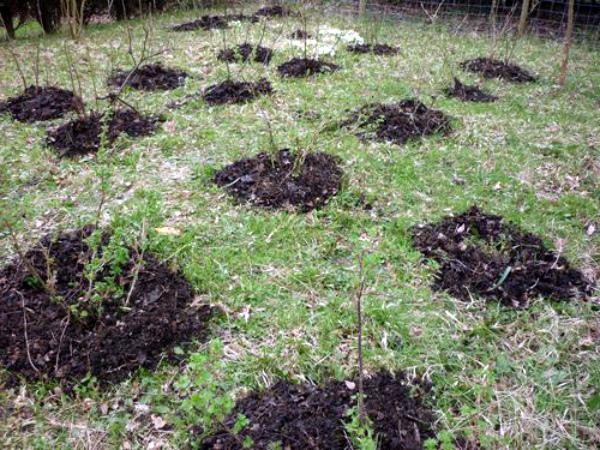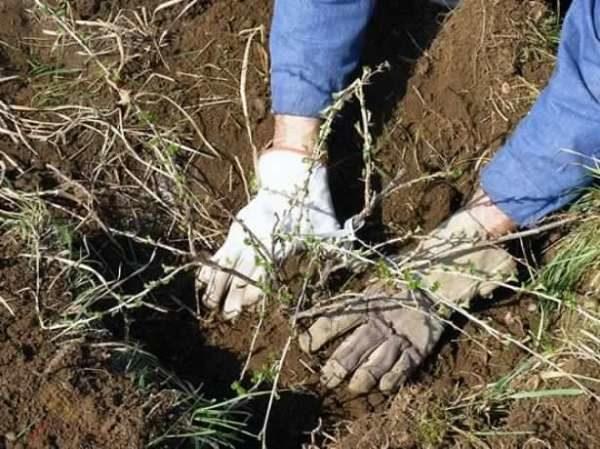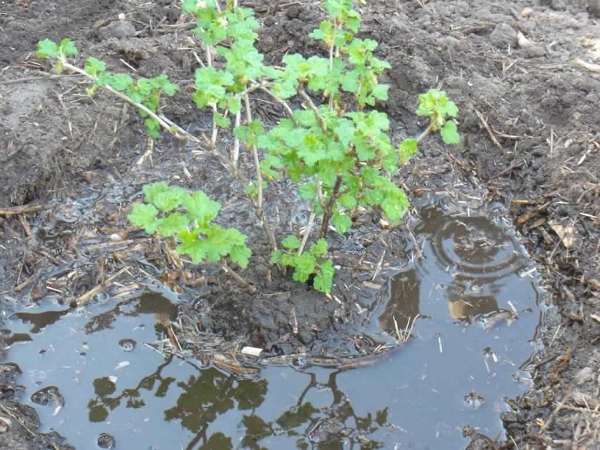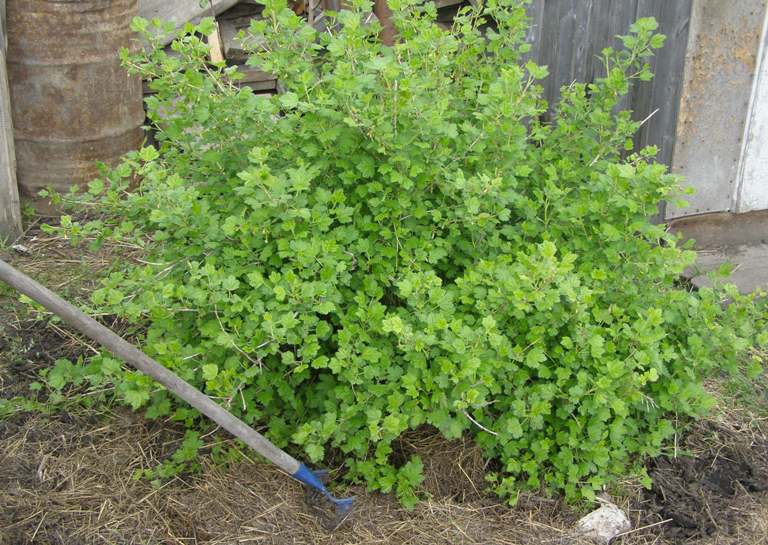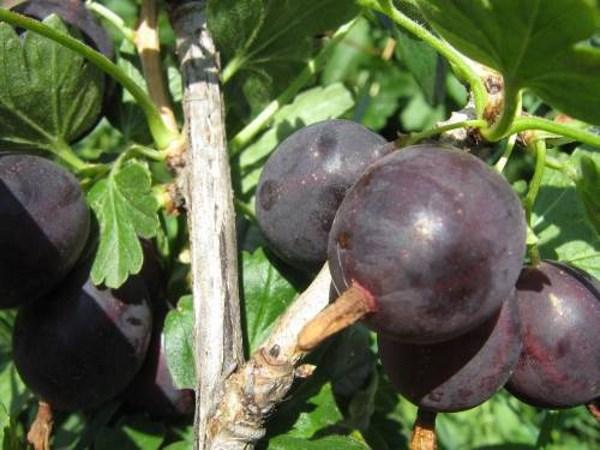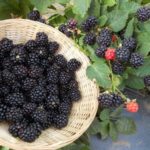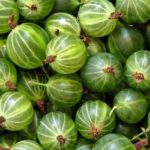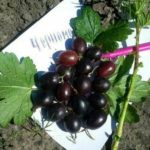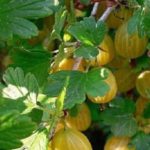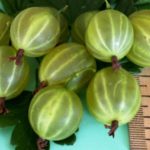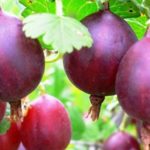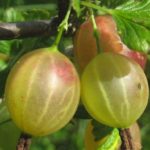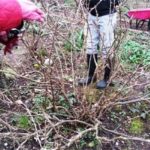The miracle of Soviet selection, the gooseberry variety Komandor, came from the famous parents African and Chelyabinsk green. Under the leadership of Vladimir Ilyin, in 1995, a long-awaited bush without thorns was born.
- External description of the variety Komandor (Vladil)
- Bush, shoots and leaves
- Root system
- Productivity and berries
- Specifications
- Advantages of the variety
- Disadvantages of the variety
- Frost resistance and drought resistance
- Diseases and pests that damage crops
- How to grow a bush: planting and caring for gooseberries
- Landing technology
- When should you plant Commander in open ground?
- Required soil composition
- Dimensions of the planting hole and planting scheme of bushes
- Caring for young and mature bushes
- Regularity of watering and fertilizing
- Formation and pruning of bushes
- Treatment against pests and diseases
- Features of flowering and fruiting varieties
External description of the variety Komandor (Vladil)
The unforgettable taste of crispy berries is familiar and loved by every summer resident. Jams and compotes made from gooseberries rightfully occupy the centerpieces of the holiday table. But the thought of harvesting from this prickly stubborn creature will discourage even the most pragmatic owner. Ilyin brilliantly solved the problem of this plant by developing a thornless type of gooseberry, for which he was immortalized in the first name of this variety, Vladil, which is made up of the first syllables of his first and last name.
Gooseberry Commander cannot be confused with any other species. The tall growth of the bushes, the compact shape of the plant, the berries of a rich dark color - these are features unique to it. But for those who have not yet met Vladil, the following description will help identify him at the station.
Bush, shoots and leaves
The bushes of this variety have a serious growth, sometimes reaching 1.5 m. Thin stems are arranged quite closely, due to which the plant occupies compact areas in the garden plot.
The branches of the Commander are covered with thin green-brown bark, which glows a pleasant pink color in the sun.
The foliage of this variety has a dense structure with characteristic deep cuts and is located on the branches in a beautiful ladder. At the base of the leaf there is a notch characteristic of all gooseberries.
Root system
The root system of this variety traditionally does not spread beyond the boundaries of the bush itself, preferring to grow in depth. The depth of the longest shoots of the system reaches 1.5 m, but the main part of them is not lower than 15-50 cm. Every year the Vladil variety grows new roots.The oldest roots gradually die off, making room for young shoots.
Productivity and berries
The noble, burgundy color of the berries with a hint of brown is very similar to dark grape varieties. The fruit size is average, not exceeding 7 grams, with thin, smooth skin. The juicy sweet pulp of this plant has very few inclusions of black seeds.
The ripening of berries occurs already in mid-summer, for which the Komandor variety has the status of a mid-season species. Due to the abundant presence of ascorbic acid in the skin of the fruit, the berries have a sour taste. The weight of the harvest collected from the bush per season is 6-8 kg.
Specifications
Although the Commander belongs to the gooseberry family, it has individual traits that are not inherent in this agricultural crop. For the most part, the plant has a whole list of positive qualities, but it is not without its disadvantages.
Advantages of the variety
The undoubted advantage of this gooseberry varieties is the absence of thorns. Harvesting and caring for the plant is now becoming commonplace, no more difficult than caring for currants. The first berries of the Vladil gooseberry begin to ripen early, gradually turning into mass ripening of the entire crop. Therefore, there will be a great opportunity to enjoy berries picked directly from the bush almost until the end of July.
The taste qualities of this variety are rated 4.7 on a five-point tasting scale, which is objectively an excellent rating. Despite their exquisite taste, gooseberries are not uncommon, as the harvests are quite abundant - up to 8 kg per bush.
In addition, the Commander variety took all the best from its parents, providing itself with strong immunity to many diseases.
Disadvantages of the variety
There are not many of them, but they need to be taken into account.The thin delicate skin of the berries, so pleasant to the taste, creates problems during transportation. Therefore, it is better to remove the berries from the bush when they are not ripe and place them in a container with low sides, tightly closing it with a lid.. Good packaging will prevent valuable cargo from being shaken during transportation.
With such tenderness of the berries, they do not last long. Therefore, after harvesting, it is immediately processed. Picked Vladil gooseberry fruits will last no more than 5 days in the refrigerator, and even less without it. If it is not possible to immediately process the crop, freezing is an excellent option. With this treatment, it will last for up to six months without losing much of its taste.
Frost resistance and drought resistance
Despite its love of water, the plant calmly tolerates short-term droughts thanks to its fairly deep root system.
Although long, hot summers can destroy the crop, this can easily be prevented by regular watering.
The creators of the Commander variety are especially proud of its frost resistance. It has been experimentally established that frosts reaching -30 degrees are tolerated painlessly by this plant. But a caring owner will cover the bushes, because short-term frosts below design temperatures are not new for Russia.
Diseases and pests that damage crops
The Commander variety has good health and the usual diseases inherent in the culture bypass it. Even sawfly and powdery mildew are not afraid of this variety. But the Vladil variety also has weaknesses:
- A fungal disease popularly called “rust” often affects this variety. Foliage, flowers, ovaries, and sometimes the fruits themselves begin to become covered with yellowish growths, which subsequently darken. Such a plant must be treated with a solution of Bordeaux mixture at a concentration of 1%.
- Drying of branches—removing dying shoots is usually sufficient. But if this operation does not help, then this is a sign of a fungal disease of the root system. Such a plant must be uprooted and burned, otherwise there is a risk of spreading to other bushes. It is imperative to take into account that even one remaining pruning can spread the infection to neighbors.
How to grow a bush: planting and caring for gooseberries
Planting and caring for the Commander is not a difficult job at all. Basically, all recommendations come down to operations that are universal for all gooseberries. Of course, there are also nuances.
Landing technology
Preparation begins with thorough weeding; the ground must be cleared of unnecessary plants. The cleared soil must be dug up using a shovel, carefully breaking up all the lumps. If you plan to plant several Commander bushes, then you need to maintain a distance between them of 0.8-1.5 m. It is very important to inspect the rhizomes to remove diseased and dead shoots.
The plant is immersed in a hole with a slope of 45 degrees; this will subsequently help with the growth of young shoots. You need to carefully straighten the roots and fill the hole first with loam, and then with a prepared mixture of fertilizers and black soil. After finishing the work, the bushes are thoroughly watered.
When should you plant Commander in open ground?
Despite the love of the Komandor variety for water, it is not worth planting in lowlands. The nature of gooseberries is such that they prefer the sun first, and only then drink with pleasure. Therefore, it is preferable to plant on a hill with sod-podzolic or sandy loam soil.
It is better to plant in early or mid-autumn, then the bush will have time to strengthen the root system and produce beautiful shoots in the spring.
Required soil composition
When digging a planting hole, it is necessary to separate the top fertile layer from subsequent layers of soil. The Commander variety prefers soft and sandy soil conditions, but will also take root in loam. The top layer must be mixed with fertilizer, and sand, if necessary, and the roots of the plant being planted should be covered with this mixture.
Dimensions of the planting hole and planting scheme of bushes
The hole for planting must be at least 40 cm deep. Each side of the hole must exceed 50 cm. When planting, the bottom of the hole and the roots of the plant should be sprinkled with the lower layers of excavated soil.
When planning a site with several bushes, there are the following rules. If you want to get the maximum from each bush, make a distance of 1 m between them, and 2 m between the rows. The number of branches of each plant in this configuration should be 16-20.
If you want to get the maximum from the area, then the distance between the bushes is reduced to 60-80 cm, and the row spacing to 1.2 m. The size of the bush should now consist of 10-14 branches.
Caring for young and mature bushes
Caring for the Commander variety is not difficult, although it has its own characteristics. This species is demanding on soil moisture, so you should not water wet soil at all. If the humidity is normal or low, you will need 5 liters of water per bush. There is an easy way to check the soil moisture saturation.
A pinch of soil is blown in the direction of the wind, lumps of wet soil will immediately fall to the ground, while dry soil will turn into dust and will continue to move, picked up by the air flow.
Regularity of watering and fertilizing
The Commander variety loves water, but the main thing in this matter is not to overdo it. Watered soil should not become waterlogged, that is, water should not stagnate on the surface.On average, one bush uses 3-5 liters per day.
Before preparing for winter, the Komandor gooseberry is watered until the moisture stops being absorbed. Such abundant watering will increase the frost resistance of the plant. The Vladil variety loves chicken manure, although superphosphates will also work. The owner who feeds gooseberries can expect a large number of large berries and a healthy appearance of the plant. However, this procedure should be carried out only after harvesting.
Formation and pruning of bushes
In autumn, the bush should definitely be pruned. Branches affected by pests and diseases must be removed without fail. Although the Commander variety is not sensitive to cold, it is better to play it safe and cover it for the winter. In the cold, elastic gooseberry branches become fragile, so it makes sense to install supports and frames.
Treatment against pests and diseases
A white coating on the foliage, similar to limescale spots, is a sign of the appearance of scale insects. A small pest, similar to an ant, almost invisible to the eye, but capable of causing a lot of trouble. In addition to specialized means of control, they can be defeated with Decis or Aktara solutions.
Aphid colonies can slow down growth or even destroy a plant, so controlling them is extremely important. In addition to the above means of combating the past pest, Cesar and Actofit will additionally help. For people who do not want to use chemicals, it is advisable to use wood ash or concentrated tobacco solution.
Features of flowering and fruiting varieties
Vladil gooseberries begin to bloom in mid-May. Small yellow-green flowers shower the entire bush, giving it elegance.The warm spring sun, heating the inflorescences, causes them to change color to a soft pink hue. The buds are grouped on branches in groups of 2-3, which makes the bush look soft and fluffy at this time. The shape of the flowers resembles a bell with 4 petals turned outward. The flowering period does not last long, and at the end of May the petals completely fall off.
After a couple of weeks, the ovary appears, quickly turning into small green berries. Harvest ripening occurs 6-8 weeks after the start of flowering. Commander is a very rewarding variety of gooseberry, and with proper care it will regularly produce up to 8 kg of juicy sweet and sour berries from one bush.

